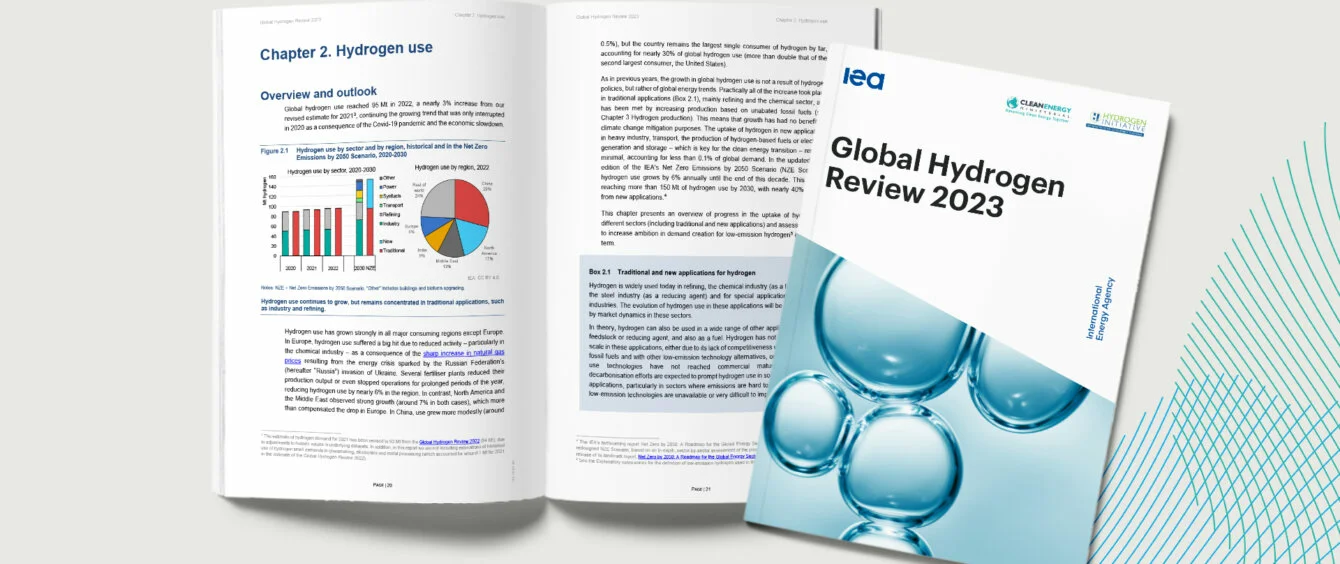The hydrogen industry is displaying dynamic development the world over. More than 40 countries have presented a hydrogen strategy, and the number of announced projects is rising steadily, as reported by the International Energy Agency (IEA) in its Global Hydrogen Review 2023. However, the study also reflects that low-emissions hydrogen continues to command a small share. According to the IEA, it currently accounts for less than one percent of global hydrogen production and usage.
The good news is that the positive trend towards low-emissions hydrogen projects persists, the IEA states, adding that an increasing number of ventures is being announced. However, developers often wait for government support before investing in the undertakings. This explains why companies have made a final investment decision in favour of only four percent of them.
A series of hurdles
The IEA has identified numerous factors driving up the cost of new projects, thus stymying development and the resulting supply. Among these are the global energy crisis, inflation, supply chain disruptions, and a 50 percent increase in financing costs. In addition, the last item in the list diminishes the potential benefits of state subsidies and causes banks to take a reserved stance.
The high cost of producing and transporting climate-friendly hydrogen weighs on the profitability of hydrogen projects. Consequently, demand for expensive low-emissions hydrogen remains below the level necessary to achieve climate goals. In 2022, a mere 0.7 percent of total demand for hydrogen targeted the climate-friendly variant, as the latter is not yet able to compete with ‘grey’ hydrogen on price.
38 million metric tons of climate-friendly H2 possible
Therefore, the IEA is issuing an urgent call to actors to step up their efforts. The agency finds that the subsidy process is too slow and puts up roadblocks to low-emissions hydrogen penetrating the market. It also remarks that businesses are thus reluctant to build production capacity and make purchasing commitments.
After all, the potential is there. Based on IEA forecasts, global annual production could advance to as much as 38 million metric tons by 2030 if all currently announced projects are implemented. The agency thus raised its projection from last year by more than 50 percent.
However, planned production capacity exceeds projected demand. Production goals add up to between 27 million and 35 million metric tons, whereas demand targets stand at a mere 14 million metric tons. But the industry’s survival hinges on robust demand. IEA technology chief Timur Gül underpins this sentiment by saying, “This century is critical to reducing production costs.”
Ambitious electrolysis goals
Meanwhile, electrolysis manufacturing capacity is on a steady rise. Some 700 megawatts were installed by the end of 2022, and the two-gigawatt mark was passed at the close of 2023. China has taken the lead, being responsible for roughly half of all capacity additions.
The review states that 420 gigawatts and more than 2,000 terawatt hours of hydrogen are conceivable by 2030 the world over if all projects are rolled out. Germany’s national hydrogen strategy envisages 10 GW.
